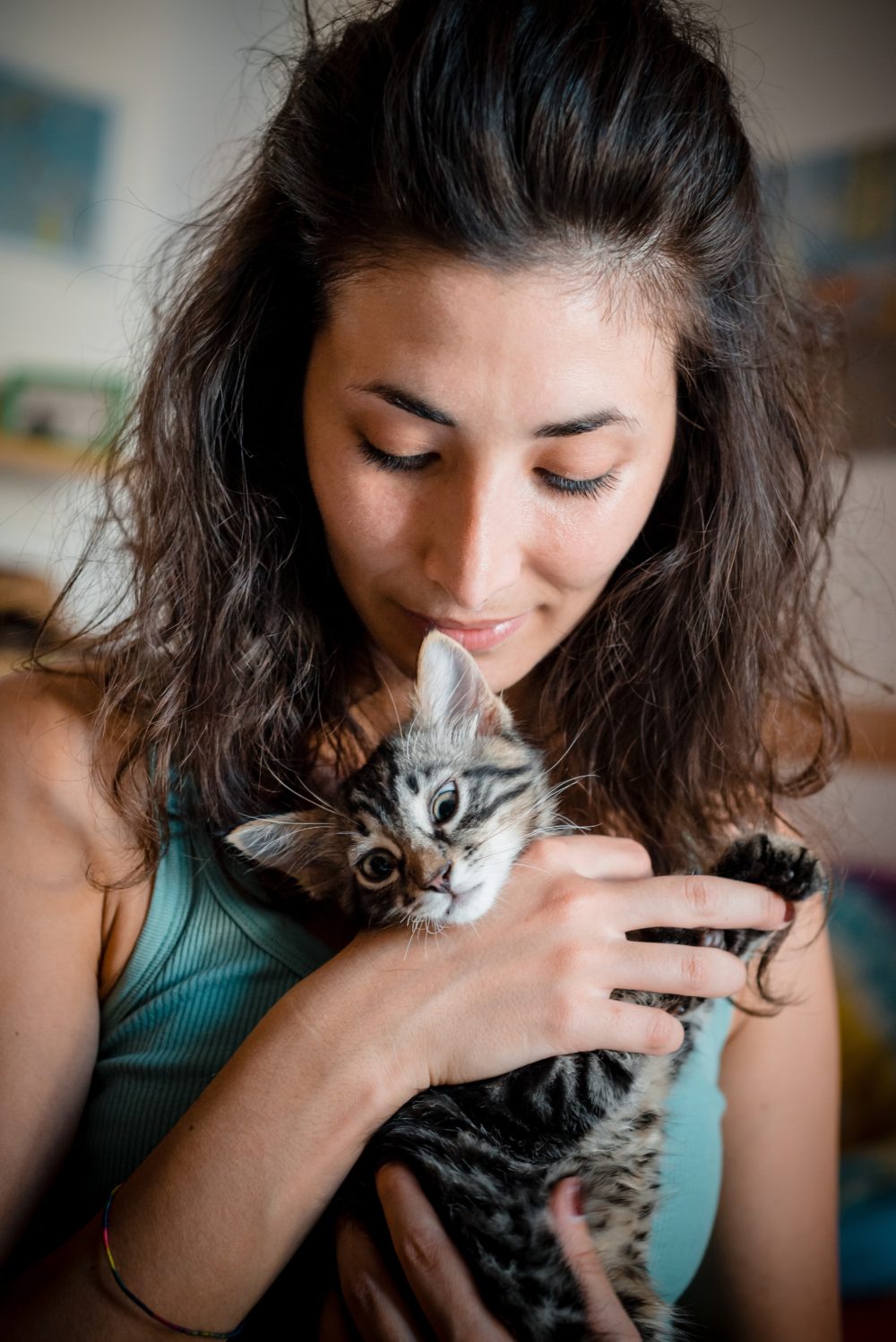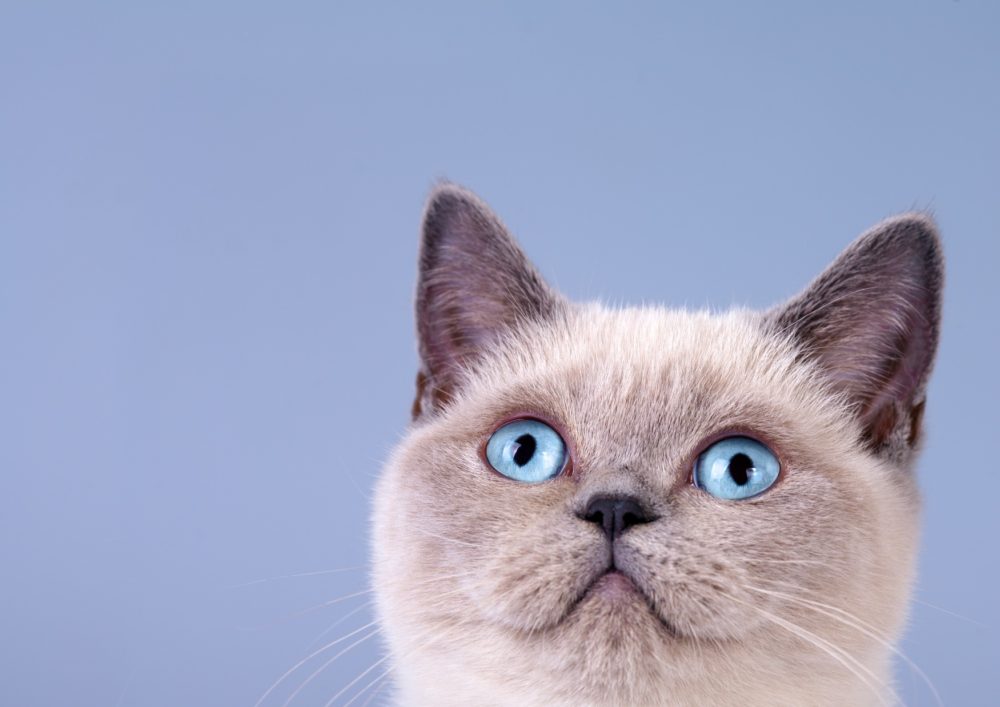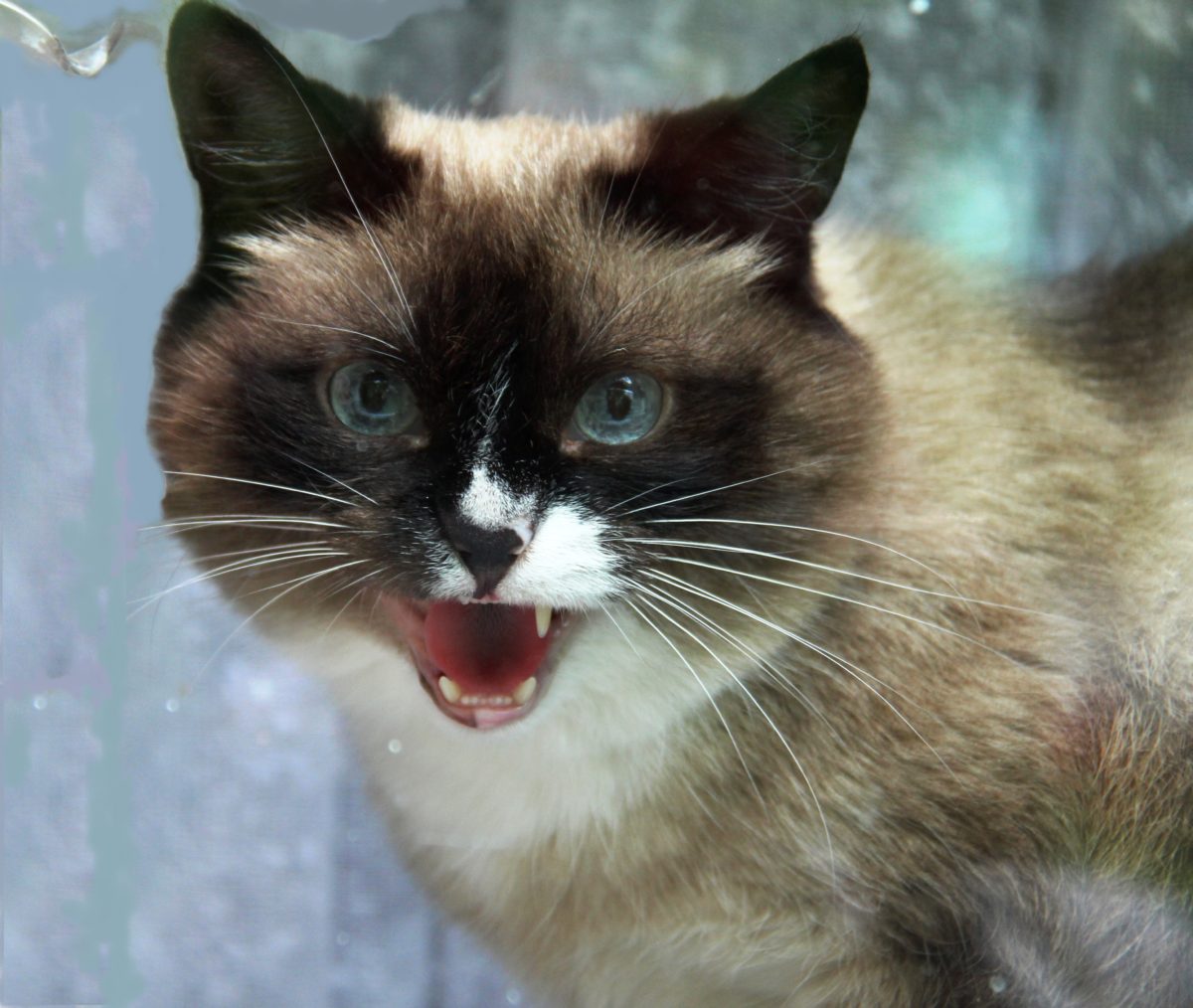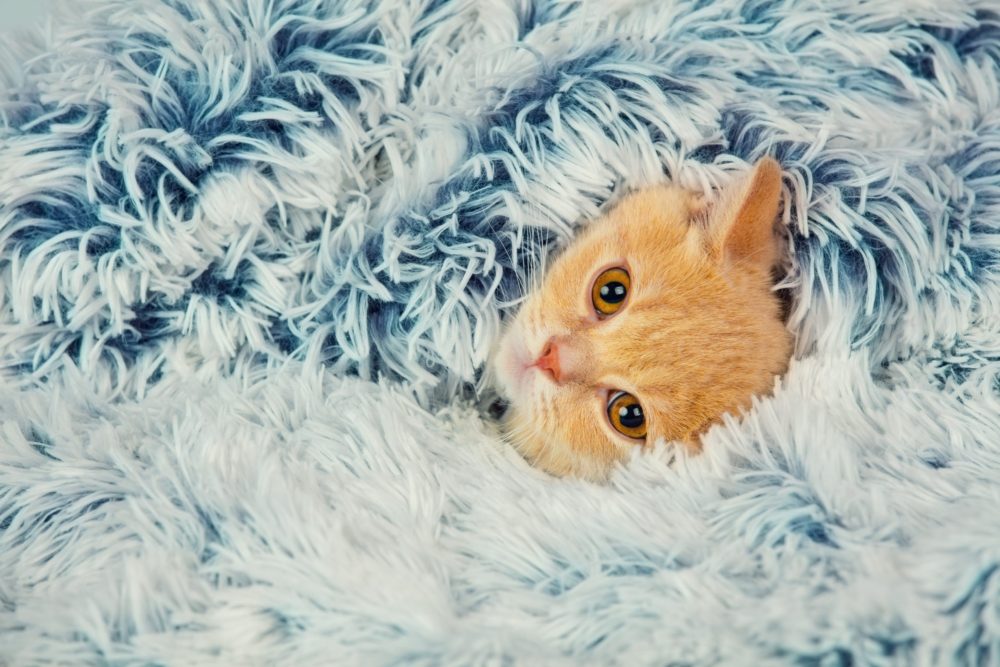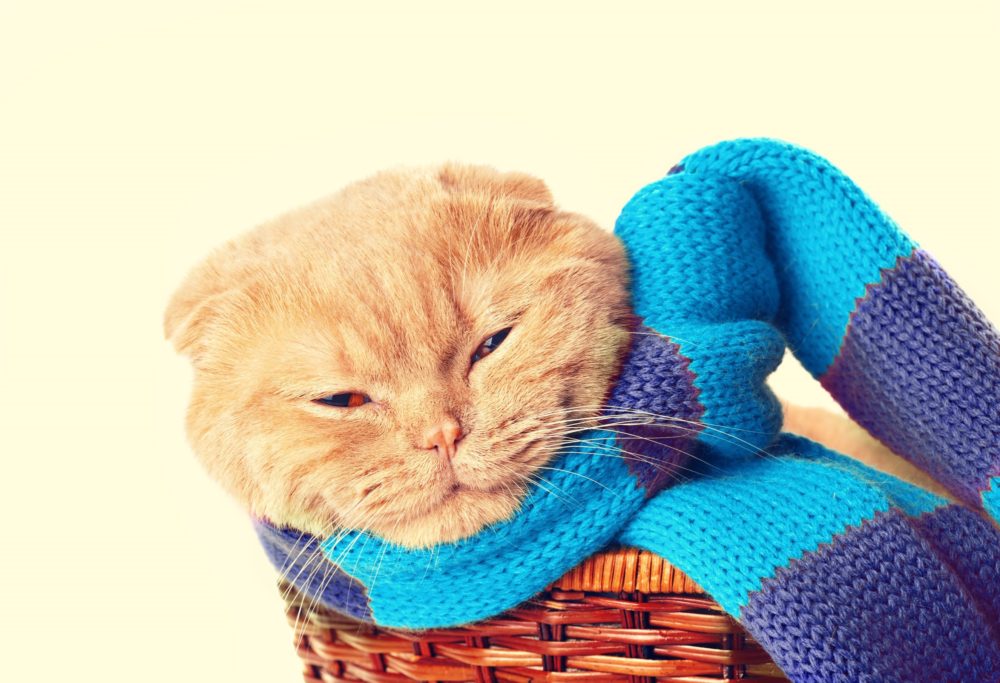
Should I leave the heating on for my cat? Do cat’s fur keep them warm?
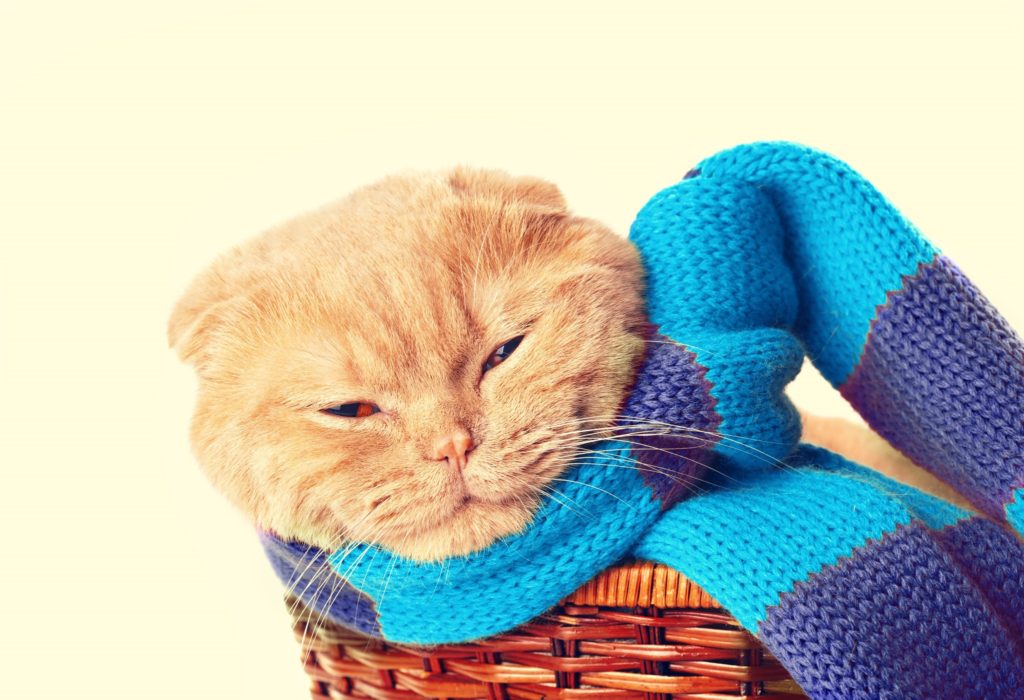
With the Autumn upon us and the temperatures falling, we slowly but surely start turning the central heating on ensuring our homes are comfortable and warm. And for those of us who leave the house for work it is a common practice to turn the heating off, or to a low setting until we return home. The combination of soaring heating bills and an awareness of conserving energy prompts these routines and habits. But what about our cats? While at home all day will they be warm enough?
The UK based organization, Energy Saving Trust, conducted a survey in 2015 and found that 43% of pet owners (cats and dog owners) did leave the heating on for their pets during the day. It was revealed that 47% of cat owners worried about their cats feeling the cold. As cat owners, we always want the best for our cats and keeping them safe and comfortable will always be a priority. But it’s important to remember that their physical and genetic makeup if very different to humans and they adapt differently to varying temperatures and weather condition.
So, do we need to leave the heating on for our cats?
The short answer is No, we do not need to leave the heating on for our cats. The heat retained in the house should be more than comfortable for your cat’s needs during the day. The normal body temperature of a cat ranges anything between 100 – 102.5°F (37.7 – 39.1°C), this is slightly higher than for humans. This means they are totally comfortable in lower temperatures than we would be. By understanding and using our heating systems correctly the temperature in our home can be regulated to a comfortable but efficient level. This can be achieved by;
- Putting the heating on timers. For example, warming the house first thing in the morning will help keep it warmer for the rest of the day.
- Setting the thermostat at a level that ensures the house doesn’t get too cold or too warm. Some homes have thermostats for each room.
- Servicing the heating system annually so it is running efficiently and safely.
However, there are exceptions and the following groups of cats will need warmer temperatures than others:
- Older cats. As cats get older, they feel the cold more and this will need particular consideration as the temperatures fall. Older cats become less active and aging joints and bones will benefit from more naps and sleeps and they will need warm, comfortable areas for this.
- Sick cats. The same applies for a cat who is unwell or sick. They may not be eating as well and therefore taking in less calories and using up their energy reserves for healing.
- Kittens. The immune systems of kittens will still be developing and therefore will be more susceptible to catching an illness due to being cold.
- Cat breeds with little or no hair. Certain cat breeds such as Siamese, Sphynx, Peterbald or Ukrainian Levkoy have very little or no fur at all. They will most definitely feel the cold more than their furrier feline friends and extra warmth will be needed to be provided as the temperatures drop.
Does a cat’s fur keep them warm?
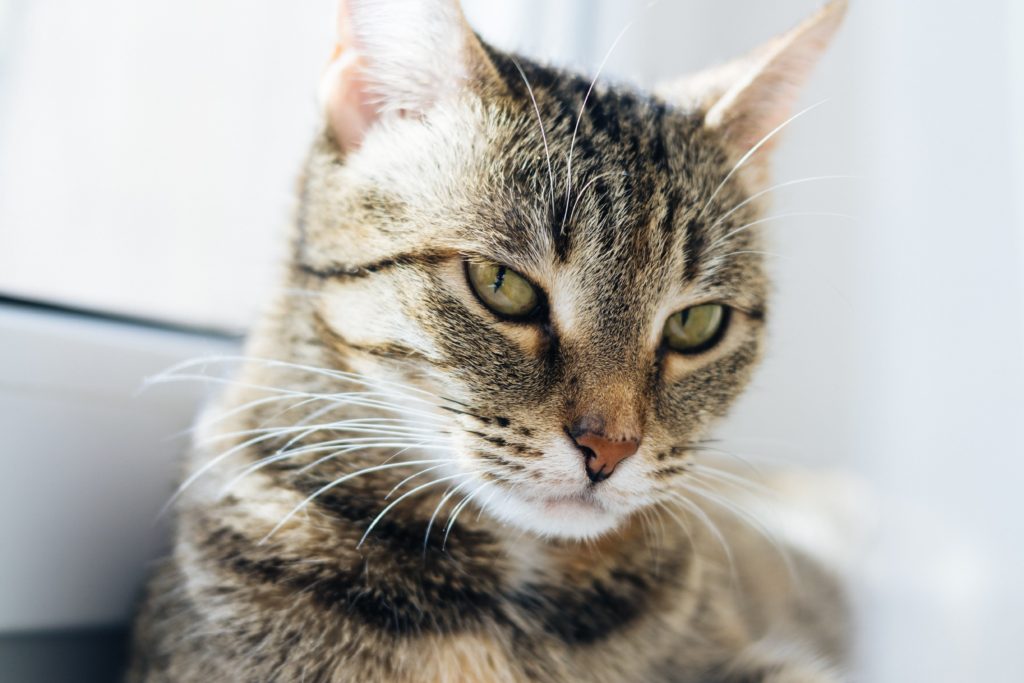
Fur, is indeed, a fabulous insulator. It helps to keep cats warm when it’s cold and helps keep cats cool in warmer temperatures. We’ve seen above that cats with little or no fur at all need extra care at winter. Cats with shorter fur also aren’t as well insulated as cats with longer fur so may not be able to withstand as cold of a temperature. However, no cats should be exposed to severe weather without shelter no matter how thick their fur is. The top layer of fur is water resistant but if cats become soaking wet from snow or rain and the fur is drenched, then they can feel become very uncomfortable. The wet fur becomes heavier and being soaked through will cause a loss of body heat and exposure to being cold and wet for a long period of time could potentially result in hypothermia.
As the colder winter months approach a cat’ s fur grows heavier and thicker to help keep them warm. The extra growth of hair, and its thicker consistency, helps keep body heat trapped inside to keep them warm. This is known as a cat’s winter coat. Many aspects of hair growth are caused by hormonal changes in response to light/dark cycles. As the days get shorter towards the winter there is a hormonal response in cats (and in many mammals) which initiates a series of biochemical responses leading to the growth of this thicker coat. Likewise, as the weather once again starts to warm up, cats will start shedding layers of their fur – this is their summer coat. Less hair means that heat can escape quicker and easier form the body helping them not to overheat on hot days.
How to keep your indoor cat warm in winter
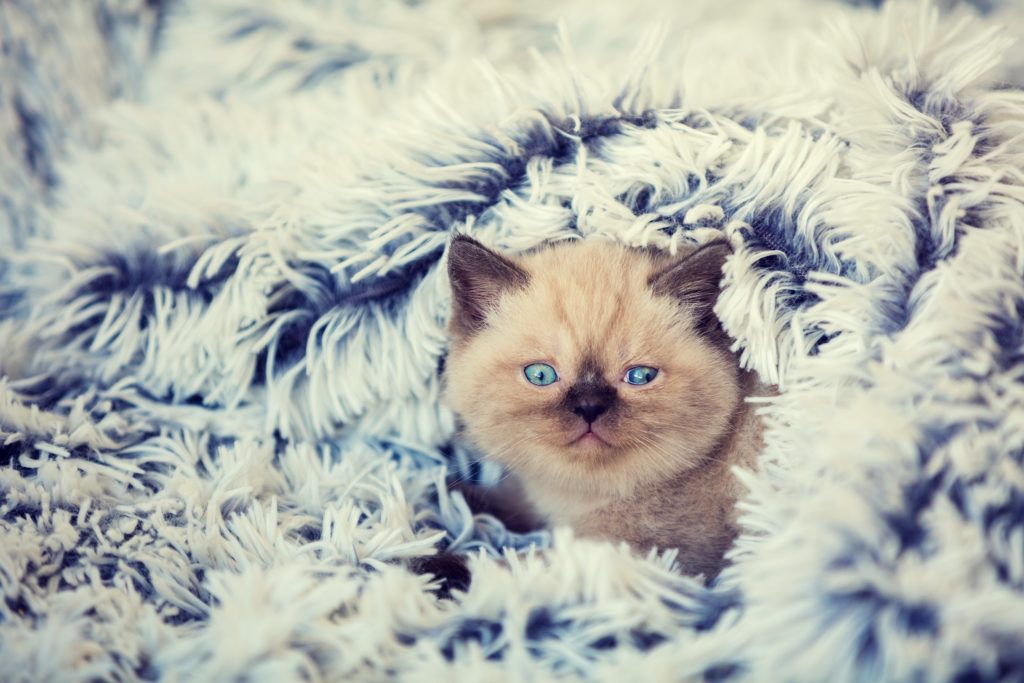
There are many ways that a warm, comfortable environment can be created for your cat without leaving the heating on. The house will already be warm from the heating being on in the morning and these following tips will ensure that even during the winter months your cat can still be warm and cozy during the day.
A nice warm bed
Knowing that cats sleep between 15 and 20 hours a day, ensuring their sleeping place is warm and snug is key. We have a whole article dedicated to ‘Where should my cat sleep’ which explores the vast array of bed options for your cat. During colder times placing an extra blanket or opting for a hooded bed are great ideas for providing extra warmth and snugness!
Radiators can remain warm for a period of time even after the heating is switched off and a radiator hammock for your cat can be the perfect place in the colder times.
Ensure cat trees, beds or napping places are away from a draught
Cats will often have a few favorite places to nap during the day. It’s worth checking that none of their favorite spots are in line with a draught.
Heated cat bed or heated pads
A heated bed will be welcomed by most cats during the colder months. They can be particularly helpful for older, sick or hairless cats as they feel the cold more. The choice of heated cat beds is endless. Some have removable heating units. Temperatures can be pre-set to the temperature best suited to the needs of your cat or the location of the bed. When choosing a heated bed ensure it has all the necessary safety and electrical testing certification.
Heated pads are very similar. They are simply heated cushioned pads to be placed on a sofa, chair or even in a box providing a comfortable and warm base for your cat to rest and sleep.
Catching the sun on a window perch
There can be nowhere better in the winter than by a window, feeling the warm rays of the winter sun through the glass. Window perches for cats are available and are simply attached to your windowsill – perfect all year round.
Increase food intake if needed
Cats will use more calories when the weather gets colder as they burn off body fat to keep their bodies warm. In turn this means they will be eating more. It is important to keep an eye on their weight to ensure they remain at a healthy weight.
Ensure there are plenty of activities
We humans are well aware that the best way to warm up is to get up and move around, and the same applies to cats too. Ensure there are plenty of toys to keep them entertained and ample opportunities for climbing and scratching. A run around chasing a cat play ball or playing hide and seek in a play tunnel will soon get them warmed up.
Access to a boiler room or airing cupboard
There are always certain areas in the house such as near the boiler or an airing cupboard that seem to be always warmer than the rest of the house whatever the weather. Why not allow your cat access to these warmer spots. Maybe it’s the perfect place for a snug afternoon nap.
A feline friend to cozy up to
What better way to keep warm than to snuggle up with your fellow cat to share body heat? It’s something we have definitely seen in our household – Misty and Boo snuggling up together for a warm cozy sleep.
How to keep your outdoor cat warm in winter
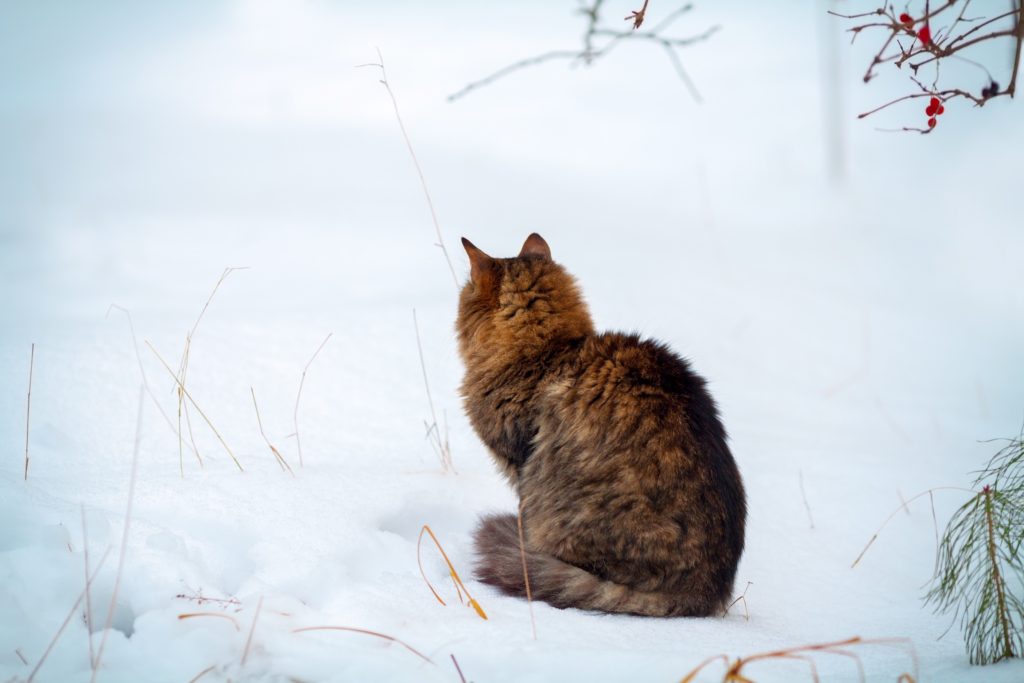 Whilst some outdoor cats may prefer not to venture outside on a cold frosty morning, many will still insist on braving the weather and head outdoors. It is important to ensure they always have access to shelter, somewhere warm and dry like an outhouse or garage. Keep your garage clean and tidy ensuring any dangerous objects are kept away safely. Make a dedicated space in your garage or shed for your cat such as a cosy nest of straw to snuggle into.
Whilst some outdoor cats may prefer not to venture outside on a cold frosty morning, many will still insist on braving the weather and head outdoors. It is important to ensure they always have access to shelter, somewhere warm and dry like an outhouse or garage. Keep your garage clean and tidy ensuring any dangerous objects are kept away safely. Make a dedicated space in your garage or shed for your cat such as a cosy nest of straw to snuggle into.
You can also buy or make shelters for your outdoor cats. Making your own shelter doesn’t have to be complicated or expensive. Ensure it is not too big, it is the cat’s body heat that warms the shelter and in a large space the heat generated will disperse quickly. Straw is the best material to insulate the shelter as the cats can snuggle and burrow into the straw to keep warm. Avoid using hay as it soaks moisture and can get mouldy. It can also cause allergies in some cats. If possible, try to raise the shelter off the ground and do not put the entrance in the direction of the wind. After snowfall, clear away the snow to make a clear walkway to the shelter.
On extremely cold temperatures it is advisable to keep cats indoors as hypothermia and frostbites are key risk factors. The fur coat of cats will not protect them from severe freezing temperatures. On cold rainy days, or in snow, the fur will get wet and this then decreases their body temperature. Check out our article ‘Keeping cats safe in winter’ for a full checklist for keeping your cat safe during the winter months.
Other articles you may find of interest:
Keeping cats safe in winter – a complete guide

